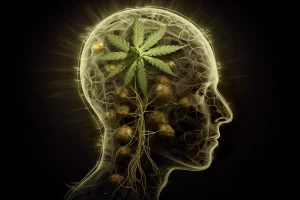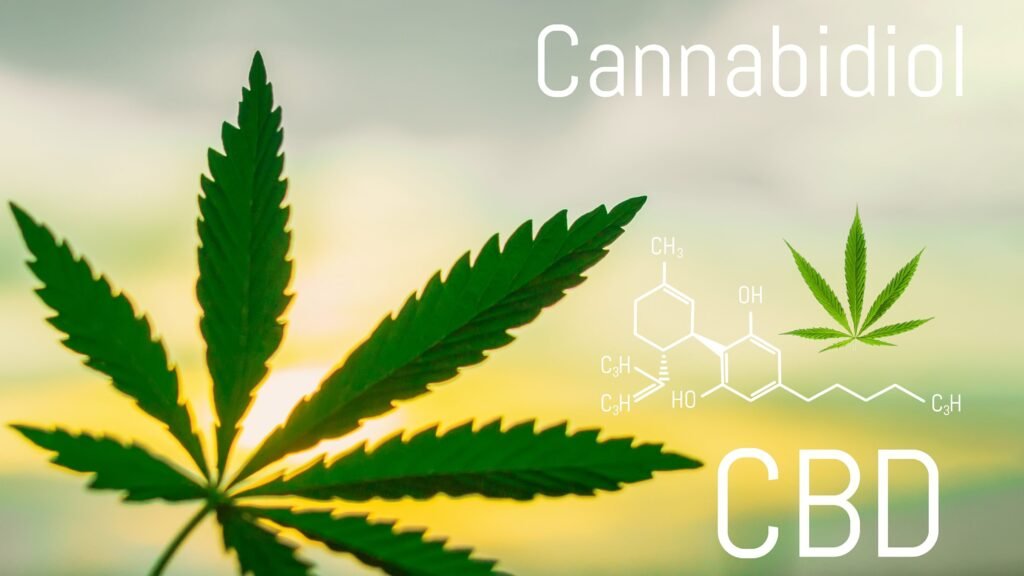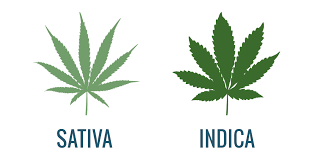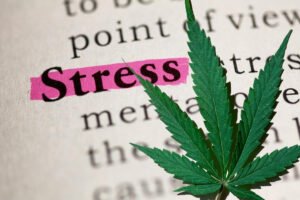The Relaxing Relationship Between Cannabis and Stress
A Brief History of Cannabis Use for Relaxation
The use of weed as a means of relaxation dates back thousands of years. Ancient civilizations such as the Chinese, Greeks, and Indians used the plant in various forms. They were used for smoking, ingesting, or applying topically. Marijuana played a significant role in early Chinese medicine, treating multiple issues, including insomnia, anxiety, and even malaria.
In the 20th century, cannabis became widely popular among artists and musicians. They found it helpful in enhancing their imagination and reducing performance-related anxiety. Research on the advantages and hazards of cannabis use for relaxation has increased recently as legalization campaigns have gained traction in various nations and jurisdictions across the globe.
How Cannabis Affects the Body’s Stress Response
When we experience stress, our body releases cortisol, which triggers a “fight or flight” response. This response can manifest physically as increased heart rate and sweating. It has been seen that the cannabinoids, or active ingredients in cannabis, interact with our endocannabinoid system. It plays a role in regulating our stress response.
When consumed, cannabinoids like THC (tetrahydrocannabinol) bind to receptors in our brain, causing feelings of euphoria or relaxation. Another prevalent cannabinoid found in cannabis products called CBD (cannabidiol) has also been proven to have potential therapeutic effects on diseases linked to anxiety without having any intoxicating side effects.
In general, cannabis has long been recognised for its calming effects. We are learning that this is true science as more research is done on its interactions with our bodies’ stress response mechanisms. It is a real, supported by scientific methods of relieving daily stress.
Types of Cannabis Strains for Relaxation
If you’ve ever walked into a Washington DC dispensary, you know that cannabis has many strains. Every strain differs in its special qualities; some are more suitable for relaxing than others.
But before we get into the specific strains, let’s first talk about the two main types of cannabis: indica and sativa.
Indica vs. Sativa: What’s the difference?
There are two different species of the cannabis plant- Indica and Sativa. Indica plants are typically shorter and bushier, with broader leaves.
They tend to grow in cooler climates and have a higher yield of buds per plant. Sativa plants, on the other hand, are taller with narrower leaves.
They thrive in warmer climates and produce fewer but larger buds per plant. The effects of indica vs. sativa are different as well.
Sativa strains are renowned for their uplifted and energizing effects, whereas Indica strains are more calming and restful.
Of course, there is some overlap between the two categories. This is especially true when it comes to hybrid strains that combine both indica and sativa genetics.
Popular cannabis strains for relaxation and stress relief
If you’re looking for a strain that will help you unwind after a long day or ease your anxiety symptoms, here are some popular options:
- Granddaddy Purple: This Indica-dominant strain promotes deep relaxation and relieves pain without causing drowsiness.
- Bubba Kush: Another indica-heavy strain, Bubba Kush is famous for its tranquilizing effects that can help ease stress and anxiety.
- Blue Dream: A hybrid strain that leans slightly towards sativa genetics, Blue Dream is popular for its euphoric and uplifting effects that can help reduce anxiety and depression.
- Sour Diesel: This sativa-heavy strain is known for its energizing and mood-boosting effects that can help combat stress and depression.
Of course, everyone’s body chemistry is different, so what works for one person may not work for another. It’s essential to experiment with different strains and find the one that works best for you.
How does Cannabis help with Stress Relief?
It has been demonstrated that cannabis has a number of advantageous effects on the body’s stress response.
It makes it an effective tool for managing stress. One of the ways cannabis helps with stress relief is through its interaction with the endocannabinoid system.
This system is responsible for regulating a variety of physiological processes, including stress response. The cannabinoids found in cannabis interact with receptors in the endocannabinoid system. This can help to regulate the body’s response to stress.
Another way that cannabis helps with stress relief is by reducing cortisol levels. Cortisol is a hormone released by the body in response to stress.
Elevated cortisol levels have been linked to several adverse health outcomes, including anxiety, depression, and weight gain. Cannabis has been shown to reduce cortisol levels in the body. This helps individuals manage their stress levels more effectively.
Cannabis can reduce symptoms of anxiety and depression, which are often associated with high stress levels and can be challenging to manage without medication.
However, many find that cannabis use can help them feel more relaxed and less anxious or depressed. It’s important to note that while cannabis can be helpful for some people experiencing these symptoms, it may not be appropriate or effective for everyone, depending on their needs and health history.
Methods of Consumption
When it comes to using cannabis for stress relief, there are several consumption methods. The three most popular options are smoking, vaping, and edibles. Each method has its pros and cons, so it’s essential to consider your personal preferences and needs before deciding which one to try.
Smoking vs Vaping
Smoking is the most traditional method. It involves burning the cannabis flower and inhaling the smoke through a joint or pipe. Vaping is a newer method that involves heating the cannabis flower or concentrate without burning it. It creates a vapor that can be inhaled through a vaporizer.
One advantage of vaping over smoking is that it can be less harsh on the lungs since you’re not inhaling smoke. However, some people prefer the taste and ritual of smoking.
Edibles cannabis
Edibles are another popular option for consuming cannabis. These are food products infused with cannabis extract, such as Biscotti strain, gummies, or wedding cake strain.
Edibles take longer to take effect than smoking or vaping because they have to be digested first. However, they can provide longer-lasting impacts and offer a discreet way to consume cannabis without any smoke or smell.
Dosage Considerations
Dosing is crucial when using cannabis for stress relief because taking too much can increase anxiety instead of reducing it. It’s important to start with a low dose and gradually increase until you find what works best for your body.
The recommended starting dose for beginners is 2-5 milligrams of THC (the primary psychoactive compound in cannabis). If you’re consuming edibles, be aware that their effects take longer to set in. Wait at least an hour before taking more.
Remember, everyone’s body reacts differently to cannabis, so it’s important to listen to your body and adjust accordingly. If you’re unsure about dosing, consult a medical professional or budtender at a local dispensary for guidance.
Risks and Side Effects
Cannabis has been praised for its ability to reduce stress and promote relaxation. But it’s important to acknowledge that it’s not without risks. While the potential side effects of marijuana use are generally mild compared to other drugs, they should still be taken seriously. In this section, we’ll look at some potential adverse effects of cannabis use.
Potential adverse effects on mental health
While cannabis can help reduce anxiety and depression symptoms, it’s important to note that excessive use can have the opposite effect. In some cases, long-term marijuana use has been linked with increased rates of psychosis and schizophrenia.
Additionally, individuals already predisposed to mental health disorders may be more susceptible to adverse side effects from marijuana use. It’s also worth noting that while cannabis is non-addictive in the traditional sense, some users may develop a psychological dependence on the drug.
This can lead to feelings of anxiety or depression when trying to quit or cut back on usage. As with any substance, moderation is key.
Physical side effects to watch out for
In addition to potential adverse mental health side effects, there are also physical side effects related to weed use. These typically include dry mouth (a.k.a “cottonmouth”), red eyes, increased appetite (“the munchies”), impaired coordination, and slowed reaction time.
Some users may also experience increased heart rate or blood pressure after using cannabis. While these physical changes are generally temporary and harmless for healthy individuals, those with pre-existing cardiovascular conditions should exercise caution when using marijuana.
Smoking anything (including cannabis) carries inherent risks due to inhaling smoke into your lungs. While vaporizing or consuming edibles can help reduce this risk, those who smoke should do so responsibly by avoiding excessive inhalation or using combustion methods that produce less smoke.
Legal Considerations
Before consuming cannabis, it’s important to be aware of the legal status in your area. While some countries and states like Washington dispensaries have legalized cannabis for medicinal and recreational use, others still have strict laws against it.
In some places, possessing even small amounts of marijuana can result in fines or jail time. It’s important to research the laws in your area before buying or consuming cannabis.
In some cases, medical marijuana may be available with a prescription from a doctor. Other places may only allow CBD products that contain no THC, the psychoactive compound found in marijuana.
Cannabis Overview of Current Legal Status in Different Countries/States
The legal status of cannabis varies widely around the world. Marijuana has been fully legalized for medical and entertainment use in Canada, Uruguay, and several US states (including California). However, in countries such as Germany and Italy, medical cannabis is legal, but recreational use remains illegal.
In many other regions, including Africa and Asia, laws surrounding cannabis possession and consumption are much stricter, with harsh penalties for offenders. It’s always best to research the laws in your area before trying to purchase or consume cannabis products.
Tips for Safe and Legal Consumption
If you live in an area where cannabis is legal or available for medicinal use with a prescription, there are several ways to ensure safe consumption:
- Purchase from licensed dispensaries: These establishments adhere to strict quality control standards. They ensure their products are free of harmful substances such as pesticides or heavy metals.
- Start with a low dosage: As with any substance, it’s important to start slow when trying out new strains of marijuana. Everyone reacts differently, so creating small ones helps avoid unpleasant side effects.
- Avoid driving: Cannabis can impair your judgment and reaction time, so never drive or operate heavy machinery under the influence. Always use designated drivers or public transportation.
- Store cannabis products safely: Keep all products out of reach of children and pets in a cool and dry place, away from direct sunlight.
By following these tips, you can ensure a safe and legal experience with cannabis, whether for healing or entertainment use.
Conclusion Recap of Benefits

It’s important to note that while cannabis can be helpful for some people in reducing stress, it’s not a universal solution and may not work for everyone. Additionally, there are potential adverse side effects related to the use of cannabis, which we will discuss in more detail below.
Risks and Legal Considerations
Cannabis offers many potential benefits for stress relief, but it’s important to be aware of the risks associated with using it. Some individuals may experience adverse side effects such as paranoia or increased anxiety when consuming large amounts of cannabis. There are also concerns about the long-term impact on mental health, including addiction and psychosis.
It’s also important to remember that despite recent legalization efforts in many places worldwide, cannabis is still illegal under federal law in many countries. It is crucial always to follow local laws and regulations concerning the purchase, possession, or consumption of cannabis products.
Final Thoughts
Overall, while there are both benefits and risks related to using weed as a relaxation tool for stress relief, it ultimately depends on what works best for each individual. Proper education about dosage and strain selection will go a long way toward responsible use without experiencing any significant adverse side effects. As researchers continue studying this fascinating plant species further, hopefully, we will learn more about its therapeutic potential beyond just addressing anxiety or depression symptoms but also other areas such as chronic pain management, among others.





